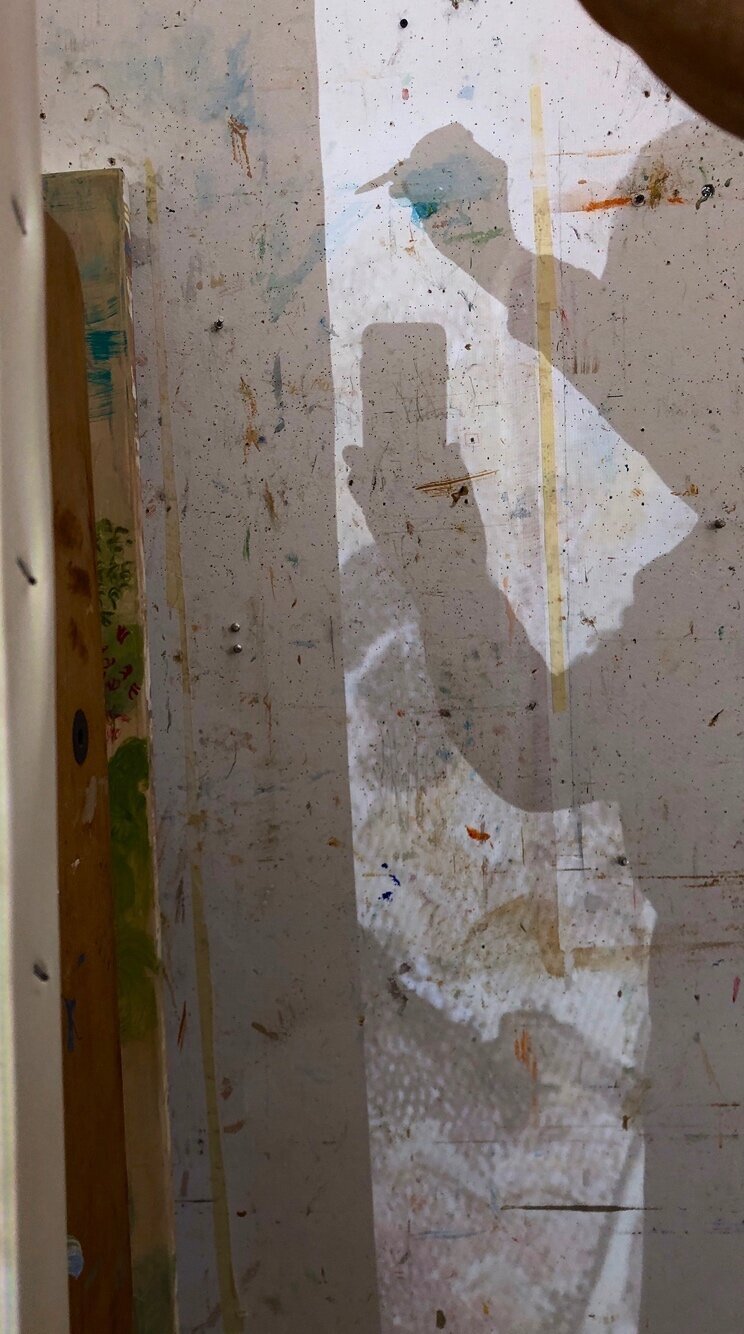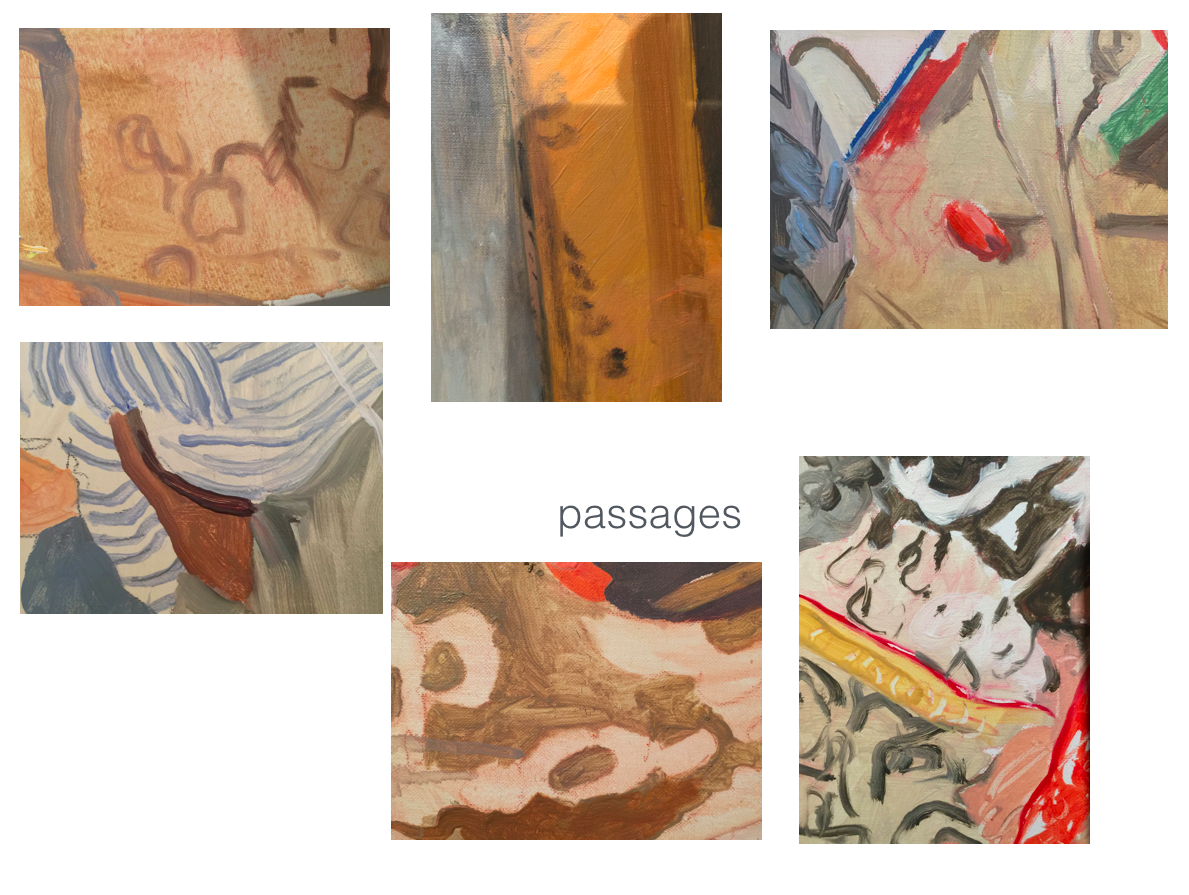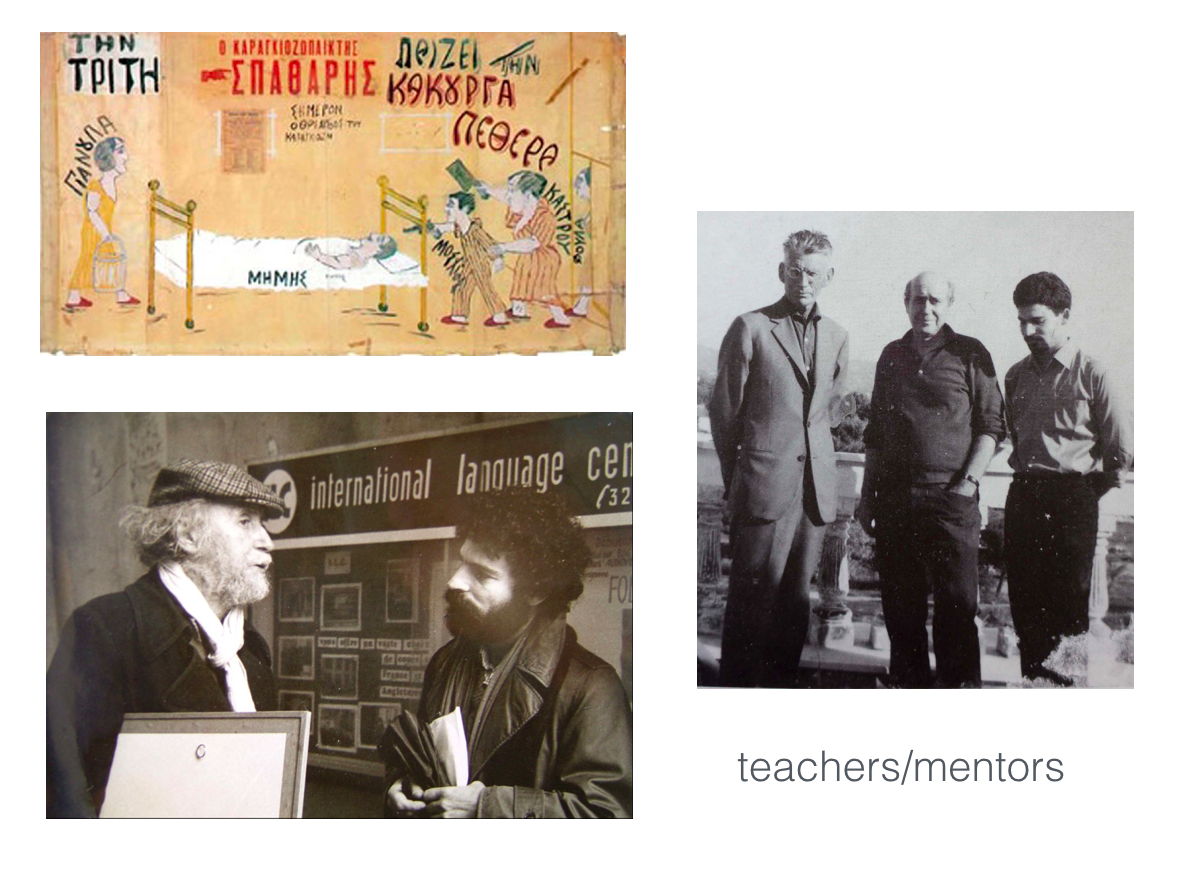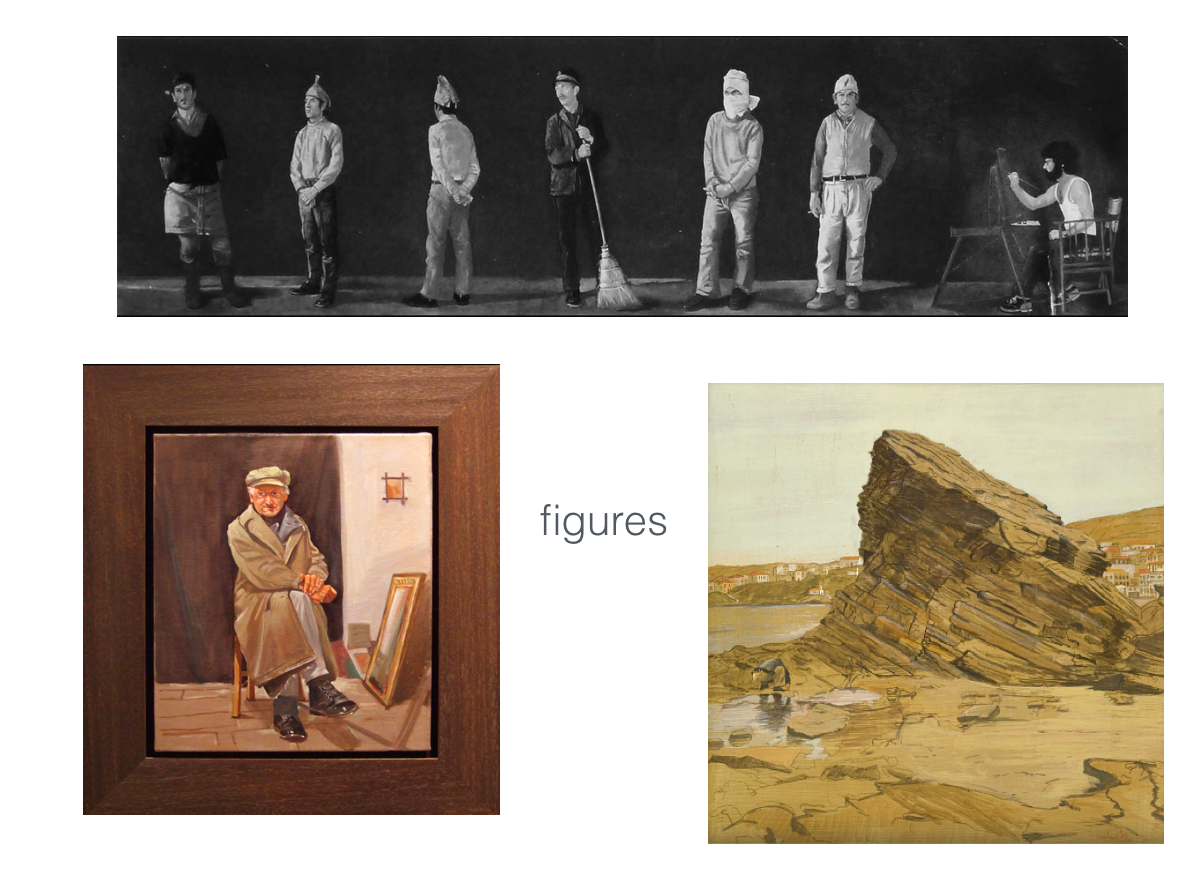SLIDE SHOW NOTES BY PAGE:
1. PARADE: this is the source of the entire ANO KATO series: a painting titled parade, which is based on photos i shot of a parade on skoufa street in athens in 2009. this painting was part of my 2010 exhibition at skoufa gallery in athens. a few years later in my colorado studio, i discovered hundreds of photos shot from above, that i had been taking over the years. it was then i recognized myself in this perspective from above, how much i love foreshortening and simply seeing intimate, ordinary moments from that perspective. thus the ANO KATO series came into being.
2. PASSAGES: i shared these selections of some of my favorite passages in the ANO KATO paintings, spoke about the meaning of passages in this context and asked the attendees to wander about for 5-10 minutes and pick out their favorite passages, then report back which ones they chose and why.
3. PROCESS: here i spoke of my love of the process of painting; how much i love the entire gamut, from making the drawing to stretching the canvas, squeezing the colors…..and how i really get as much pleasure and satisfaction from that process as i do from the act of painting and from the completed painting.
4&5 FINISHED/UNFINISHED: here i explored the whole concept of finished vs unfinished. the beauty of the unfinished painting, the way it accentuates the significance of space in the painting; how it reminds us that a painting, like everything in life, is a process, with beginnings and endings being arbitrary really. the importance of a breathing space, a place where the mind and eye can fill in the blanks. i gave as examples, aside from my own work, the paintings of 19th european plein air painters, whose work we experienced in a beautiful show titled a brush with nature. and a giacometti portrait which beautifully illustrates my point here.
6. TEACHERS/MENTORS: my greatest teachers/mentors in greece were tsarouchis, niki karagatsi and sotiris spatharis. i talked about how and why these extraordinary greek artists affected my growth as an artist and as a human being. tsarouchis with his deep grasp of the byzantine and western traditions in art, how they crossed paths in greece and his ability to synthesize the two into a new, 20th century form. niki karagatsi with her deep love for the beauty of the everyday, her way of bringing vuillard and bonnard into a totally contemporary greek context, thus creating a language all her own; her series of small scale drawings and paintings of stunning and intimate beauty. and spatharis, master of traditional greek shadow theatre. he was as great a painter, in his sets, shadow theatre figure designs and posters as he was a practitioner of this unique art form, which was the greatest and most available form of entertainment for young and old alike before the arrival of television.
7. figures: they have always been part of my work. i told the story of how, in nursery school, my teacher reported, in a document i still have, that “philip loves looking at construction workers.” 20 years later, in athens, my main body of work was a series of paintings of greek construction workers. the centerpiece of this series was kyriakos, the street sweeper in the center of the horizontal composition at the top of the page. i spoke of the seated figure of an indigent andriot in his threadbare coat. how, in the andros of that period, no one went hungry or was without shelter. the community took care of them. this man moved me, with his sweet, innocent visage. his air, in spite of his poverty, was one of a prince. years later, when i showed this portrait in my 2006 skoufa gallery exhibition in athens, many andriots recognized him, knew his name, and looked fondly at his portrait. and i spoke as well of the crouching figure at tourlos, a well known landmark rock at neimborio in andros. we don’t see his face, but his posture reveals his passionate search for shells and rocks. there is mystery here, as well as intimacy. mystery and intimacy are two qualities, one could speculate, that run through my entire body of work. a version of this painting hangs in the hirschhorn museum and sculpture garden in washington, d.c., a part of the smithsonian.
8. rubens beard: when i first came upon this rubens portrait hanging in the met in NYC, i let out a cry of excitement. it was this beard! in rubens’ beard, i found confirmation of my long held belief, reenforced by something tsarouchis once said to me, that abstract and realist painting are one and the same. at the same time, i knew beyond doubt that rubens was more excited about painting this beard, with it’s gestural swirls of grey, than he was about the actual portrait. looking at this beard, i could feel his absolute delight in the act of painting; the movement of his brush across the surface; the loose gesturing strokes his hand made as he became lost in the ancient process of making marks on a surface. little children and aboriginal peoples are compelled to make marks. these marks always reveal the soul & spirit of the mark maker; how could they not?
comments; light-filled, joyful, love the color gamut, thought provoking, as if you were reveling in your ability to see these intimate, ordinary moments while not being seen; the horizontal painting with the little girl, old woman and the man with his back to us, looking, on with the abstract swirls in the background brought to mind twombly; …
questions: what inspired the views from above angle? why the long narrow paintings? how long does it take to make one of these? how do you know when it’s finished?








